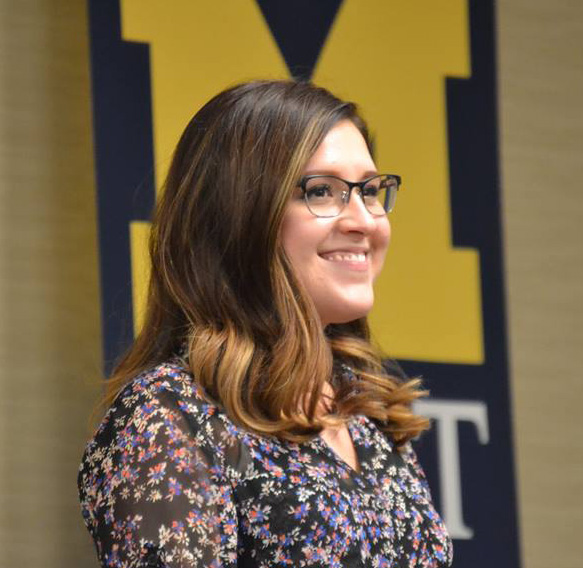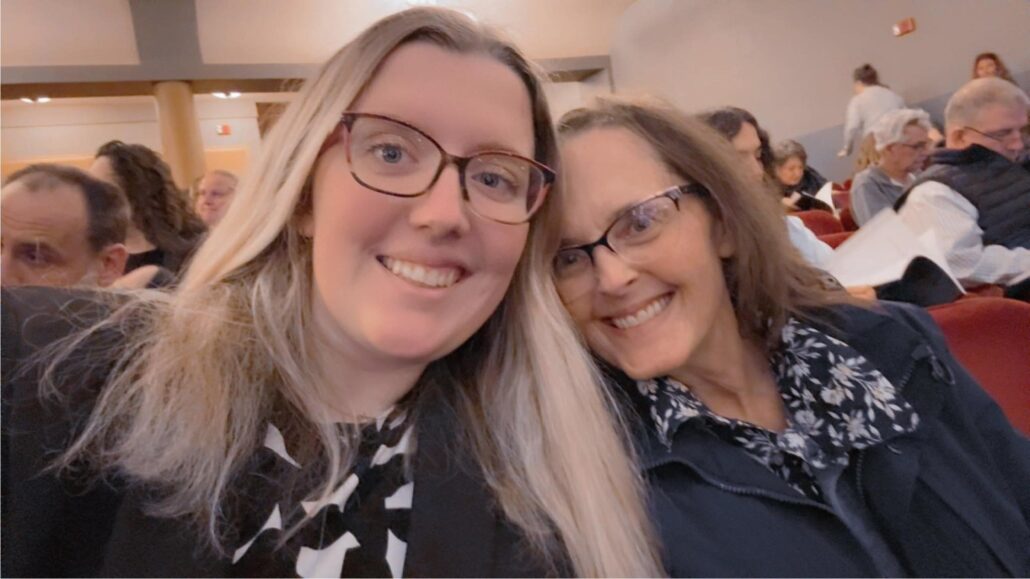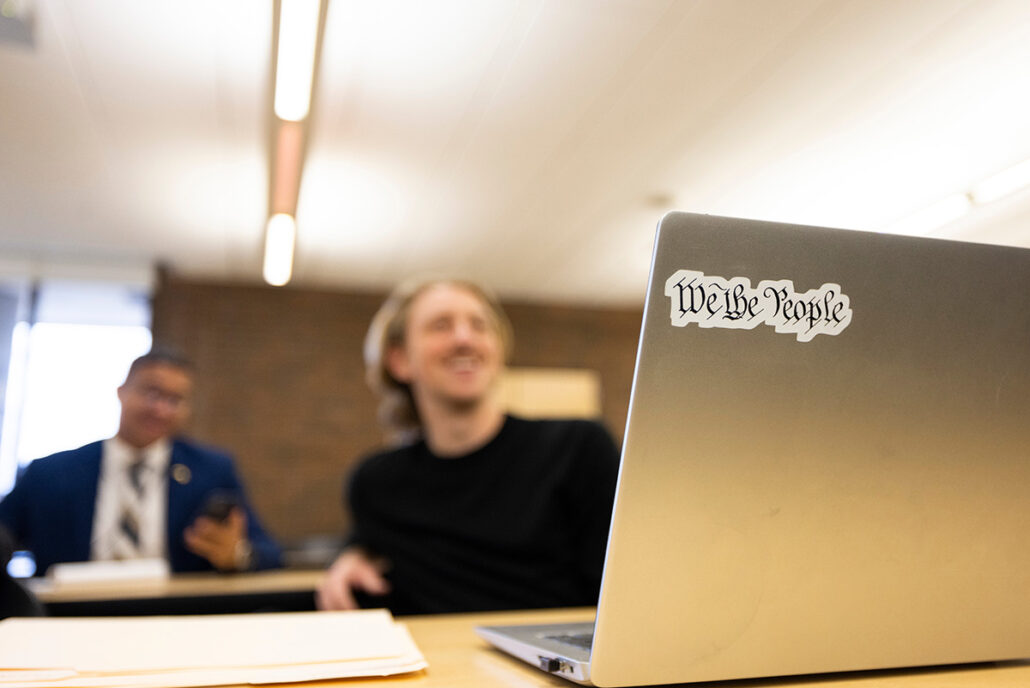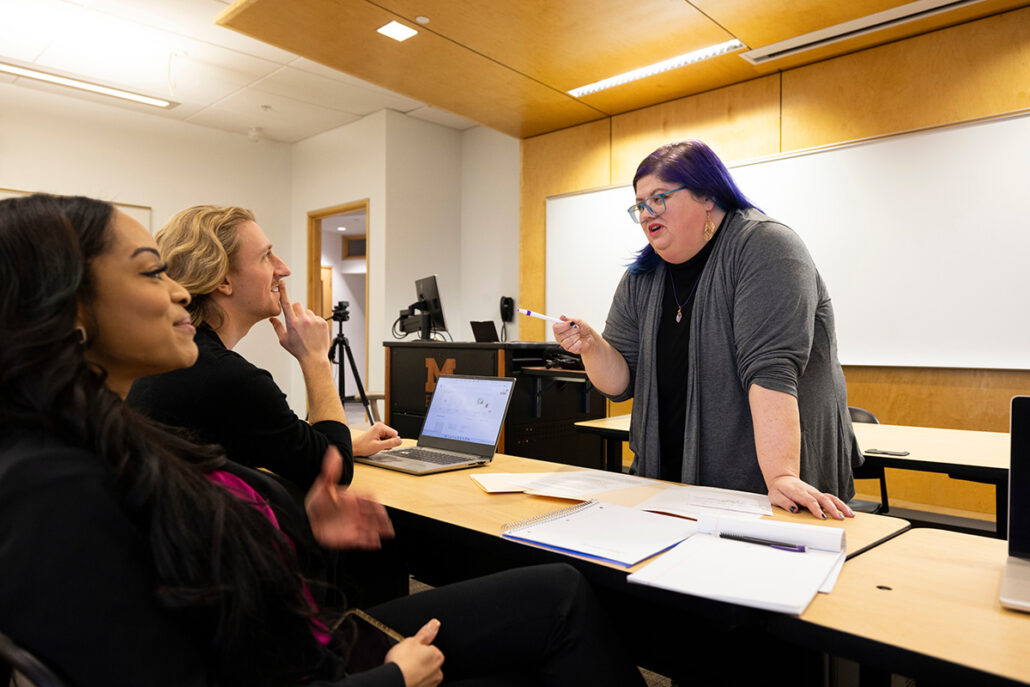UM-Flint Student Receives Grant for Theatre-Based Workshops with Area Youth

This spring, UM-Flint student Ella Thorp, a Criminal Justice major and Women & Gender Studies minor, received a New Leaders grant from the Michigan Council on Arts and Cultural Affairs to develop and implement gender-based theatre workshops for young women detained at Genesee County’s youth detention facility (GVRC). These workshops are part of the Buckham/GVRC Share Art Project, led by UM-Flint faculty members Shelley Spivack of CRJ and WGS, and Traci Currie from Communications. The Share Art Project also includes weekly visual arts and theatre workshops for young men at the facility.
When asked about doing this kind of work as an undergrad, Ella said, “[It] has been incredibly life changing. I’m working harder in school and in everyday life to make sure the kids I have the opportunity to work with have the best me possible. I want to take the opportunities I have been given throughout my life and give back to my community in every single way possible, and this is the capacity that fits me and my personality. I don’t know that I would’ve been given the chance to participate in the Buckham/GVRC Share Art project if I hadn’t been a student at UM-Flint.”
Ella’s workshops take place every other week, alternating with another for Spoken Word. Through traditional theatre exercises that help actors develop elocution, posture, and projection, Ella is helping her charges find much more than a way to be heard from stage. With these games the girls are building self-esteem, finding their voices, and learning how to positively represent themselves to others.
Says Ella, “While designing the class, I wanted to make sure each activity, exercise, and story told would teach a number of things, the most important thing being confidence in themselves.”
On Monday, July 14th, Ella, joined by fellow CRJ undergrad Cakhilah Durden, graduate student Colette Legault-Fields, and UM-Flint Theatre alum Sarah Jarrett, arrived at GVRC to teach that week’s workshop. The building, which houses juveniles from 10-17 years old, is reminiscent of a middle school in spite of its security doors and cameras. After being buzzed in, and then signing in, they began setting up for that evening’s activities: putting out an easel with a dry-erase board, setting out large sheets of paper, a giant box of markers, and pushing back tables to create an open space in the center of the room. The theme of the week was “Happiness.”
Nine girls arrived just after 5:30p.m. They shuffled in and took seats at the tables, a few eager to be there and others seemingly reluctant.
The exercises for the evening began with a “circle of encouragement” where the girls each gave a little inspiration to everyone else in the room:
“I encourage you to step out of your shell… because no one here is going to judge you.”
“I encourage you to have an open mind.”
“I encourage everyone to do good… to have fun… to keep smiling… to be happy.”
Still standing in the circle, the girls started warm up games. When one sat down before the last exercise, the rest automatically adjusted the circle to still include her. And they made sure she participated. The games had them laughing, but they were also speaking up, enunciating, and making eye contact.
Next the girls moved on to more individually focused games. They played charades, and more lessons on eye contact, posture, and body language were intertwined with acting out driving a car, making a sandwich, or playing a sport. Again, they moved from reluctance to vying to be the next to go, or to have a third or fourth turn.
“I want the hardest one.”
“I think I’m good.”
“Oh yeah, I got this.”
For the last activity of the night, the girls were given large sheets of paper and markers. They were directed to write down a story about something that made them happy and then stand in front of the group to talk about it, leaving their papers with Ella in case they needed a prompt.
As each girl took her place at the front of the room she was asked to plant her feet, puff out her chest, and articulate clearly. They were proud of their stories; many wanted to have their illustrations displayed after they talked. The happy memories poured forth:
A surprise movie with mom…
Getting a puppy for Christmas…
A hopeful letter from family…
They spoke of cell phones and candy, favorite foods and being with their friends. They spoke of feeling safe, and having a second chance. They spoke about freedom.
Once all the papers were collected and all the stories told, and after some got up to tell additional stories, it was time to wrap up the evening.
When asked what they had learned that day, they recounted the importance of how you look at people, how you stand when you talk. One girl answered, “the way you present yourself tells people how you feel about what you’re saying.”
As they lined up to leave the room, the girls were standing straighter than when they entered, and as they exited, waving goodbye, there were smiles on their faces.
Ella and her fellow leaders were smiling, too.
To learn more about the Share Art Project, listen to an interview of Shelley Spivack by Michigan Radio.
A book by Jill Rosenbaum and Shelley Spivack, Implementing a Gender-Based Arts Program for Juvenile Offenders, is available through Anderson Publishing.



